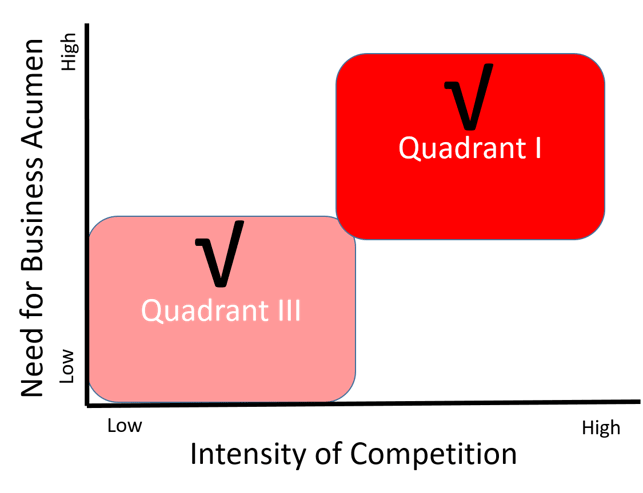Consider for a moment two companies; Company A and Company B.
Company A has been in business for over 100 years and is considered a pioneer in their industry.  They have dominated their market in terms of market share, revenue, profitability, and total shareholder value creation. Competitors have come and gone and now they stand alone as a giant with a few competitors who are happy to live off their scraps. But that is just too good to be true…
They have dominated their market in terms of market share, revenue, profitability, and total shareholder value creation. Competitors have come and gone and now they stand alone as a giant with a few competitors who are happy to live off their scraps. But that is just too good to be true…
Company B has been in business for 6 years and is considered a market innovator in their industry by inventing a new thing that didn’t exist before. But, because it is a new and hot market, Company B faces intense competition from new competitors entering the market every day fighting for share and a slice of the revenue pie. And of course none of the top three competitors in this emerging market has ever made a profit…
Conventional wisdom would indicate that the company most in need of Business Acumen skills is Company B (as illustrated by being in Quadrant I below). The idea being that because of the intensity of their competition, everyone in the organization needs additional skills to compete and survive.

While we can make a great case that the company in Quadrant I needs Business Acumen skills immediately, I can also make a strong case for the company in Quadrant III which would be Company A in my example from above. The danger for Company A is complacency and becoming to inwardly focused that they lose their ability to think strategically and react swiftly if the market changes. In other words, without a focus on developing Business Acumen skills Company A is unprepared for a competitive attack.
If you work in Company A, then it isn’t a question of “will” a major competitive threat come into your market, but a matter of when. And when they do enter your market, they will do it with the following tactics:
- Enhanced product value proposition
- Lower costs to produce
- Lower prices
- Increased marketing
- Fresh, digital messages connecting to customers
While the executive leaders of Company B may be able to react in and quick manner, it will be virtually impossible for the leaders of the business units, the leaders of leaders, the leaders of people, and the individual contributors within Company B to make the necessary adjustments through strategic thinking, value propositions, and connecting with customers in a meaningful and urgent manner. As a result, your company will make decisions that could begin a death spiral. Somewhere in your organization, some leader will figure out that the “only way to compete and save our share” is to cut prices! Which is just what your competition was hoping for because they are able to do it faster and better than you and at a much lower price. Your company will start losing money and will be forced to cut people, investments in products and services, marketing, and training. And the death watch will be on…
A solid Business Acumen skill building initiative can be cost effective and have an immediate return on investment. In today’s day in age, a basic Business Acumen training initiative can be delivered virtually and include elements such as eLearning modules in strategy, finance, operations, and marketing, integrated with computer-based business simulation scenarios.
It’s something to think about because you can be assured that Company A has already rolled it out for their team.




